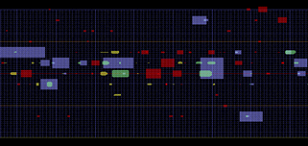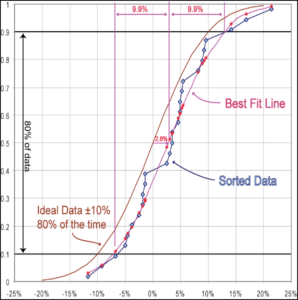ILI Unique Anomaly Interpretation
Understanding the Results of an ILI is Key to a Proper Response
The review of direct ILI signals and reporting data from an ILI run assists in mitigation plans to optimize time and resources when selecting digs. Sometimes an anomaly appears to be unique or is located in a difficult to repair location. Such anomalies require added scrutiny and careful evaluation before a decision to investigate it in the field can be made.
The Kiefner Solution
Kiefner addresses many unique anomaly scenarios, including the following:
- Denting and metal loss — Corrosion metal loss in a dent is usually not more damaging than similar corrosion in plain pipe. In contrast, metal loss caused by gouging is generally considered severe damage.
- Corrosion on the seam — ILI tools must differentiate between crack‐like selective seam weld corrosion (SSWC) and conventional corrosion that just happens to encounter a low-frequency ERW seam.
- Wide-area corrosion — Some pits within a large corrosion area may not be detected or accurately sized, and failing to include these defects may underestimate the amount of missing metal when calculating a failure pressure using standard methods for evaluating the remaining strength of the corroded pipe.
At Kiefner, we are developing methods to better interpret the ILI signals by incorporating experience and historical information on the line itself. The goal is to improve pipeline safety by identifying anomalies that could impact the pipeline’s integrity while more reliably dismissing non-critical anomalies.


Understanding the Results

Matched data pairs are evaluated, comparing metal loss depths of two successive inspections. A unity graph quickly shows corrosion growth in a meaningful, yet familiar way. Negative bias could be due to corrosion growth and is analyzed further to provide a calculated GCR specific to the pipeline. Any metal gain could indicate ILI measurement error or mill features which should not be subject to time-dependent growth (corrosion). Areas where recoats or other repairs have occurred should be considered separately from the overall CGR. Kiefner provides the experience and insight to help you understand your data.
Benefits of CorroSure
- Align and match ILI-reported indications — CorroSure aligns and matches In-line Inspection (ILI) reported indications with visual, pattern-matching detail. A thorough review of the data by both advanced algorithms and highly experienced data analysis ensures comprehensive data accuracy.
- Full pipeline system correlated — CorroSure correlates the entire pipeline system, providing a holistic view of your infrastructure. No segment is left unexamined, ensuring a comprehensive understanding of your pipeline’s health.
- Indicate corrosion growth areas — CorroSure pinpoints corrosion growth areas with exceptional accuracy. Identifying these vulnerable spots empowers proactive maintenance and timely interventions, minimizing risks.
- Correlate differing technologies or vendors — CorroSure allows you to compare data from different technologies such as MFL and UT. Additionally, it enables the comparison of ILI data from various vendors. This comparative analysis aids in selecting the most effective solutions for your specific needs.
Kiefner's Customized Approach
Kiefner analyzes diverse ILI datasets to prioritize anomaly responses. We craft tailored mitigation strategies, ensuring pipeline safety against unforeseen anomalies. With tools like LaserSure™, Kiefner ensures optimal pipeline function and heightened safety standards.
For more information on using LaserSure™ for your next project, contact us at [email protected].

